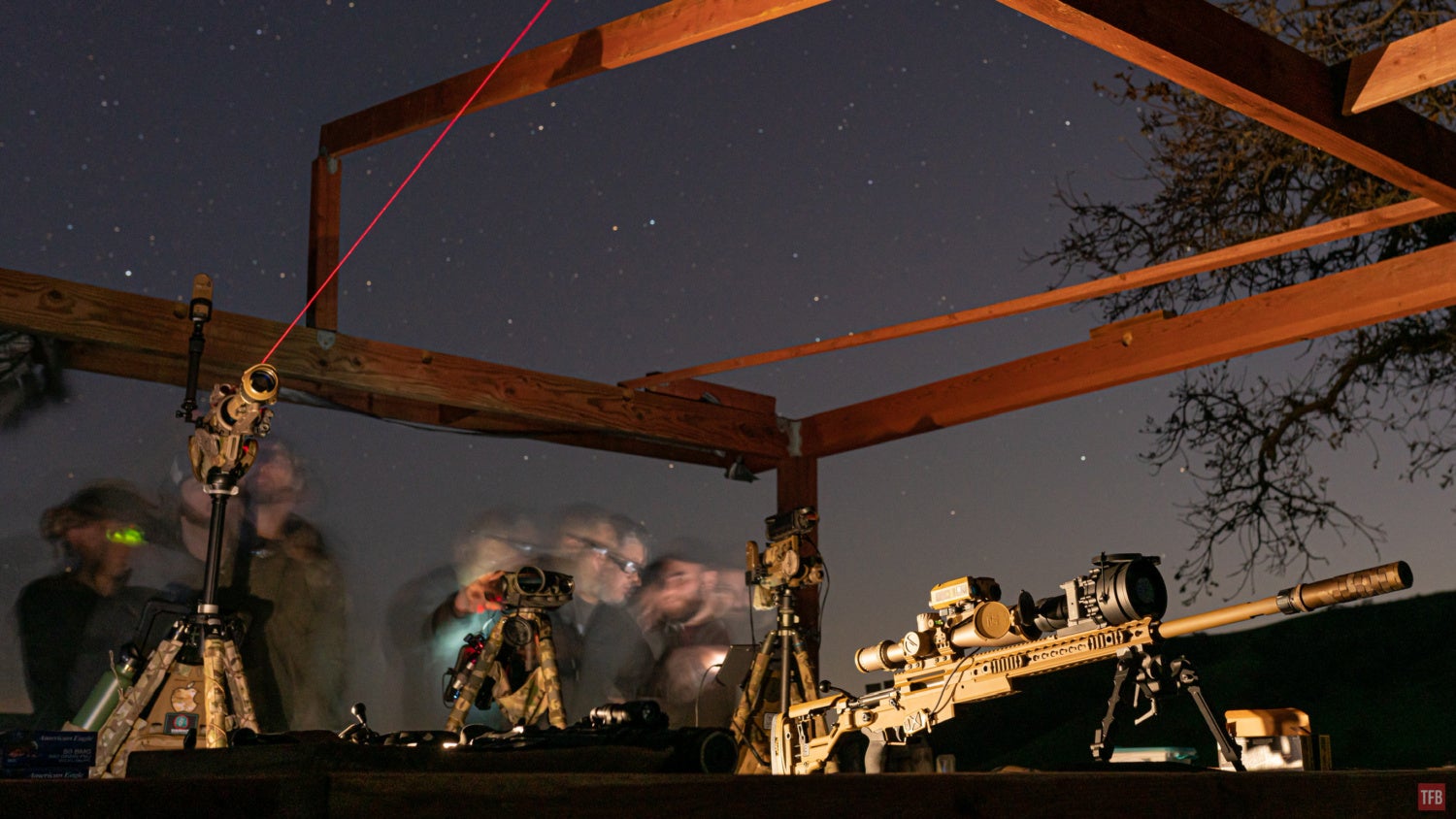Thank you for joining us here at Friday Night Lights. Last week we took a look at some weapon lights of yesteryear. Well, this time we go back to the dark and try to hit things far, far away. This is an evolution from the Dark Mile where my friends and I shot a mile target at night. This time we push it further and try to hit a steel target 2,200 yards away. Read more to find out how we accomplished the Dark ELR.
Long Range Night Stuff @ TFB:
Getting Ready To Shoot Dark ELR
Vic ranged the target and I took a picture of his ATAK screen
So shooting wildly in the dark is not what we are doing here. We need to be able to see in the dark and see far in the dark. It is thanks to our incremental experiments that led my friends and I to this challenge. The previous challenge was shooting a mile in the dark and before that was shooting past 1,000 yards in the dark. Each one had a set of unique challenges and when we succeeded we pushed ourselves towards the next challenge. So what does it take to shoot Dark ELR? Well, we had to pivot from how we shot the Dark Mile. For the mile in the dark shot, my friend Kevin used his Pixels On Target Voodoo-M thermal clip-on. We heated the steel with propane torches. This was to help Kevin see the target. I was spotting using my Vectronix LRTV. Kevin only saw a tiny pixel or two in his POV, but that was enough to give him something to aim at. That same day Kevin was getting DOPE on his gun and managed to hit the 2,200-yard steel target in the daytime. I managed to capture the hit on the LRTV. So after we succeeded in hitting the mile in the dark, we decided to try again, on another day, to hit 2,200-yard steel at night.
When we discussed how the Dark Mile went, we realized that aiming with the Voodoo-M would be very difficult on a target 2,200 yards away. Our friend Vic managed to hit the Dark Mile with his .338 Lapua Magnum Desert Tech SRS A1 by using a night vision clip-on and using an aiming laser to designate the target for him so he could aim. Technically both Vic and Kevin are shooting in the dark. Their clip-ons are not good enough to show them where the bullet lands so they can correct their aim. The LRTV could see the bullet hit the dirt. So for the Dark ELR, we decided to ditch the thermal clip-on and go back to a traditional night vision clip-on. Kevin used his retuned PVS-27 with a Photonis Echo WP tube. He set up his spotting scope with his CNVD-LR and used the RAID-X to designate the target for him to aim his gun.
Setting Up The LRTV
Just like the Dark Mile, we would lean on the LRTV to help spot for the Dark ELR. The LRTV with a 2x afocal magnifier is the closest thing to having a superpower. It was able to see bullets land a mile away. I wasn’t sure if it could see a bullet land in the dirt 2,200 yards away but I know it was able to see the splash on a steel target 2,200 yards away in the daytime. I had hopes this could work. However, one thing I needed to work on for the Dark ELR was getting a better system of calling hits and measuring how far the shooter was from the target. If you recall, the LRTV has a fixed reticle that does not change size when you zoom in. Also, there is no mention in the manual of what this reticle is used for. I don’t know what the distances between lines mean. So it is basically useless for spotting hits or misses at any distance.
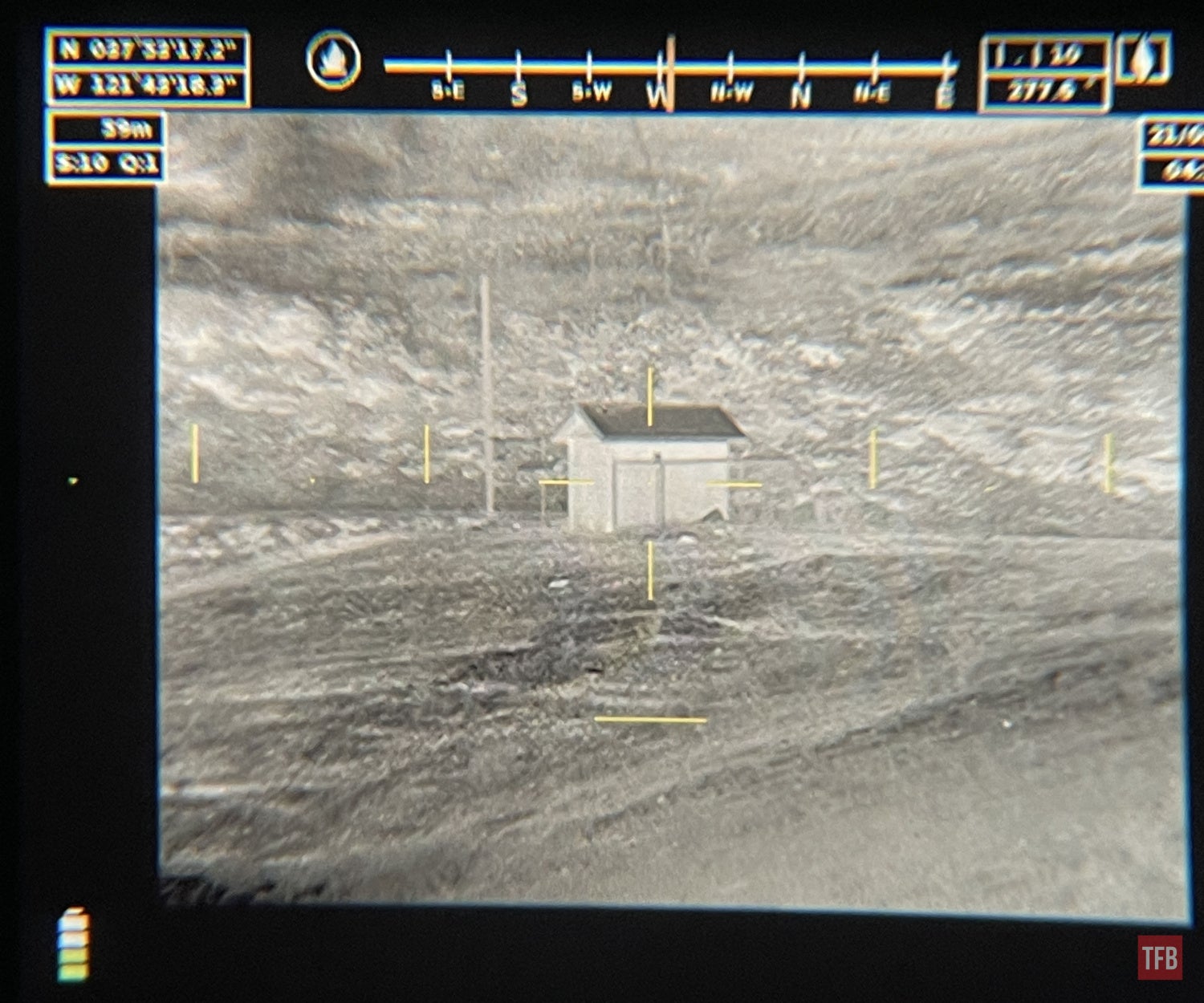
I decided to create a series of transparency overlays that I could use with the LRTV. With the help of my friend Vic, we got the video out signal of the LRTV to show up on my Android tablet. We use USB Camera Pro to display the video signal and I can record those images. Since I am using my tablet to view what the LRTV sees, I could lay transparency overlay sheets directly onto the screen. So all I had to do was find the measurements for a given target and measure it at every zoom level of the LRTV.
At the end of my street is a transmission tower. At first, I tried to measure the spaces like the large X in the middle. But trying to see this when I zoomed in with the LRTV was difficult. Then I noticed the water tower behind the transmission tower. I used my Bushnell LMSS spotting scope to measure it and it is 2 MILS tall.

Image taken from Bushnell LMSS to measure the water tower.
So at every magnification level, as long as I can see the water tower, I know the height is 2 mils. Here are the following magnification levels.
- Narrow Field of View
- Wide Field of View w/ 2x magnifier
- Narrow Field w/ 2x magnifier 2x digital zoom
- Narrow Field w/ 2x magnifier 4x digital zoom
- Narrow Field w/ 2x magnifier 8x digital zoom
I decided that I don’t really need a MILS reticle overlay for a wide field of view and I would never use digital zoom without the 2x magnifier. That is why I skipped the Narrow Field of View w/ digital zoom levels. So I made overlays for the magnification levels listed above. I pointed the LRTV at the water tower and recorded a video as I changed magnification levels. I then screen capped the video and scaled a MILS reticle to the water tower at every magnification.
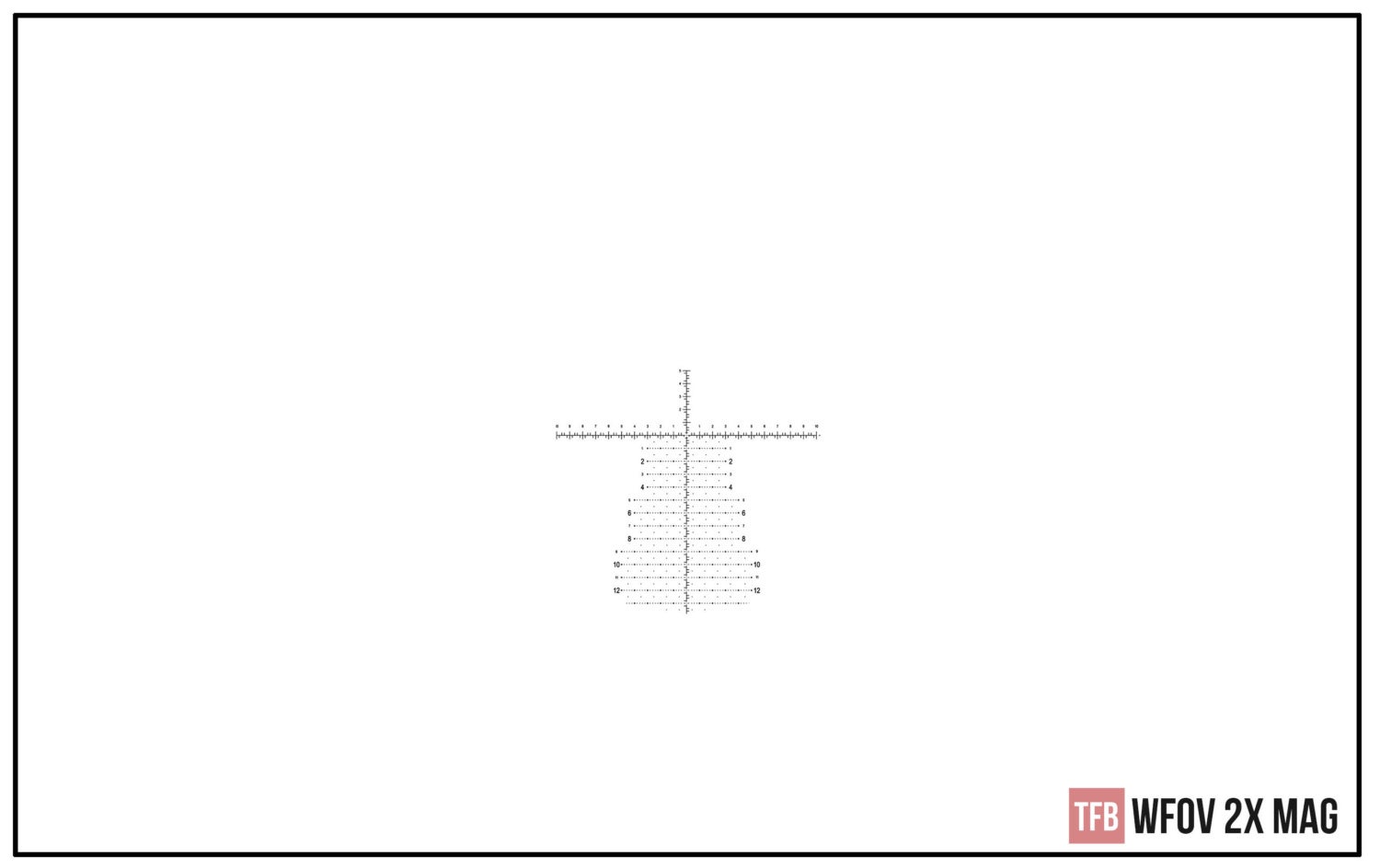
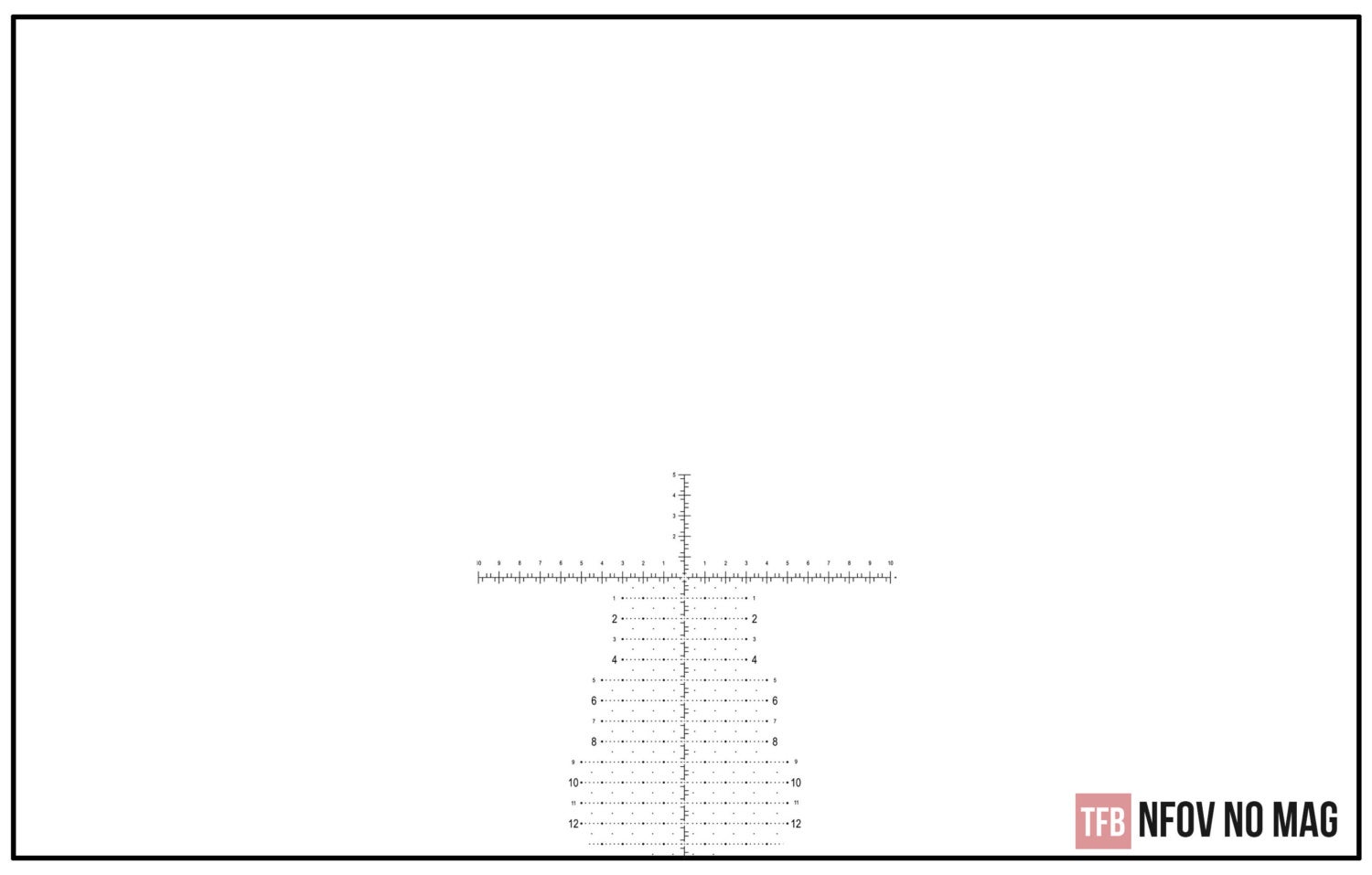
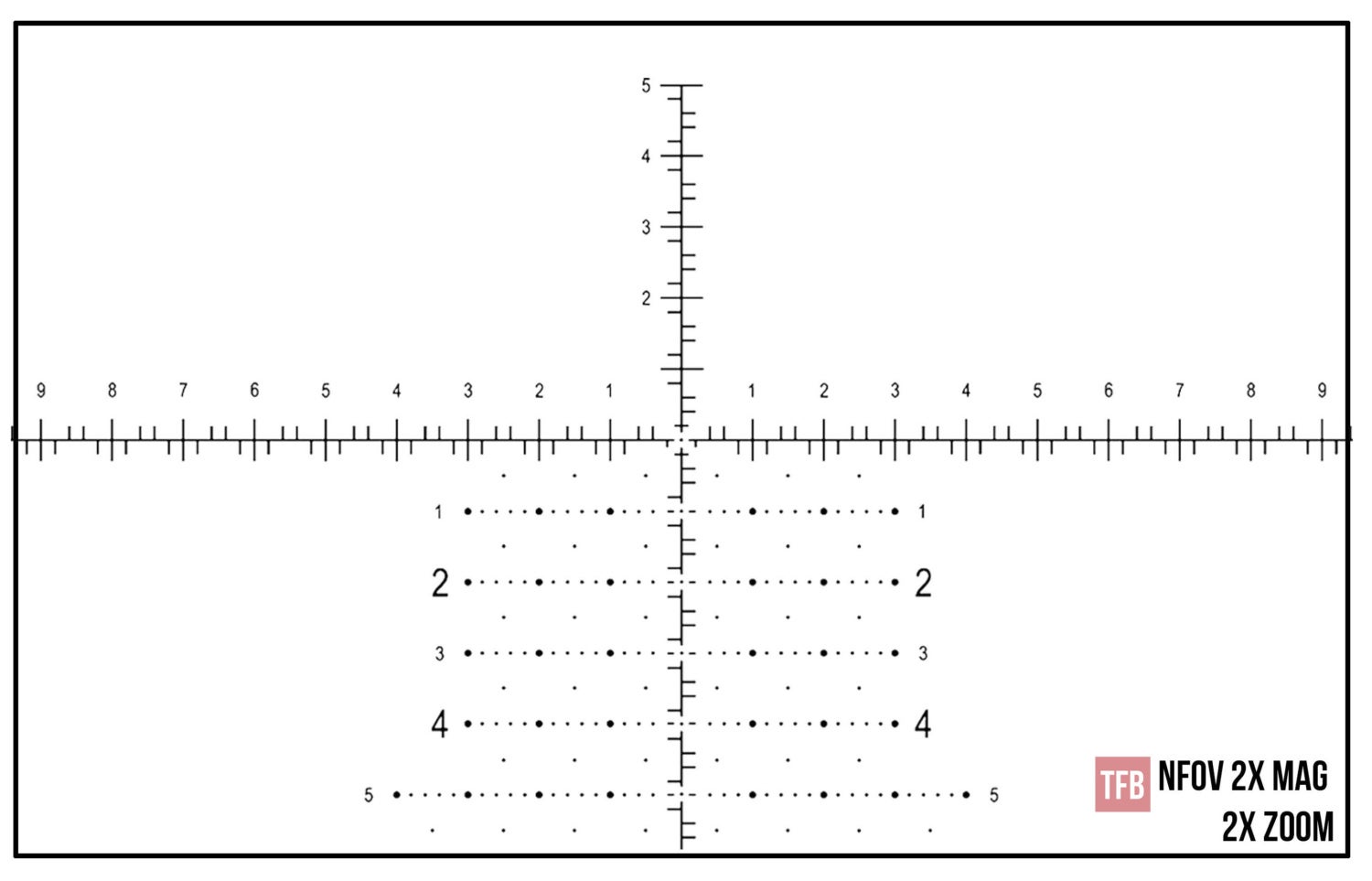
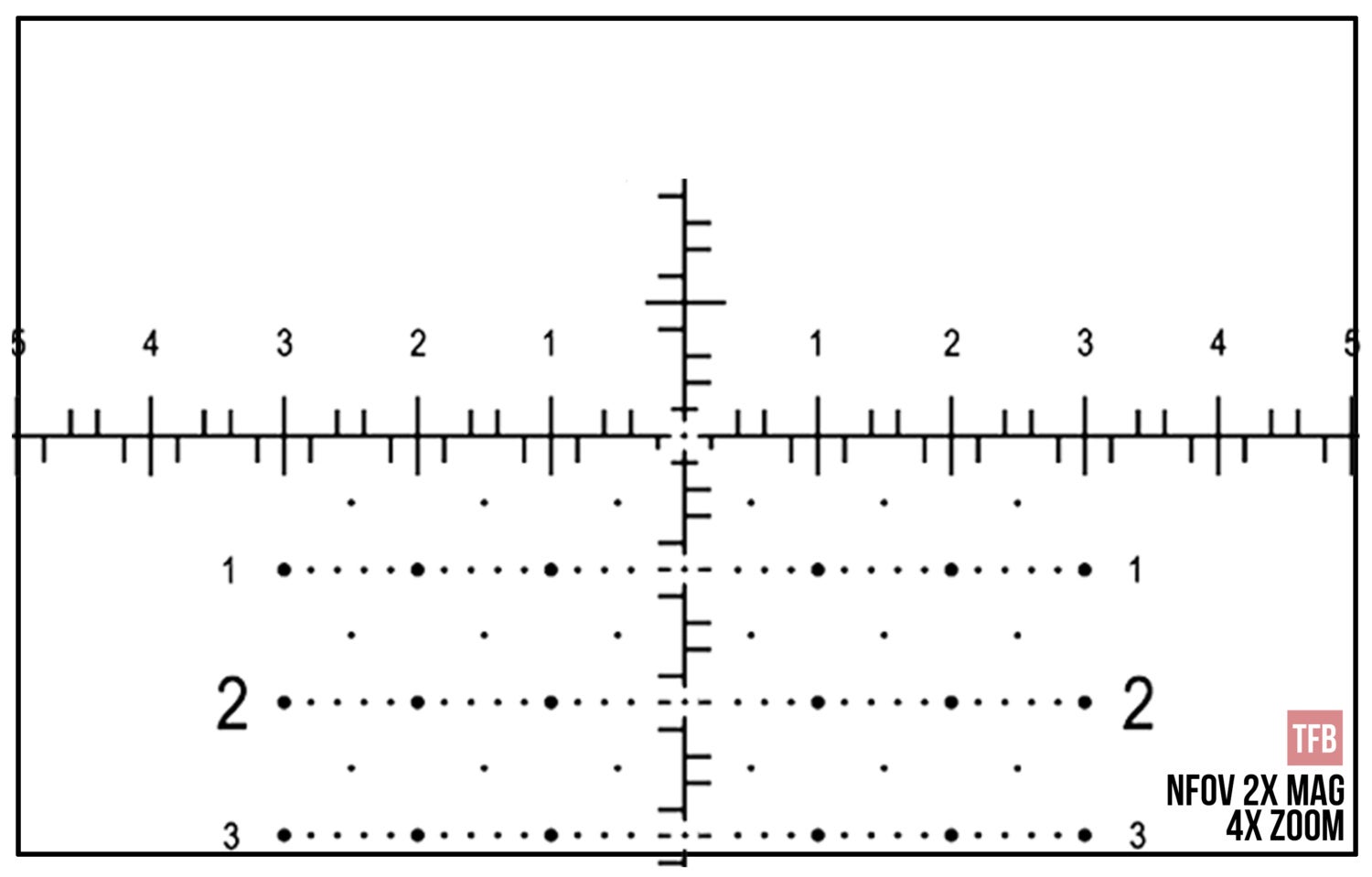
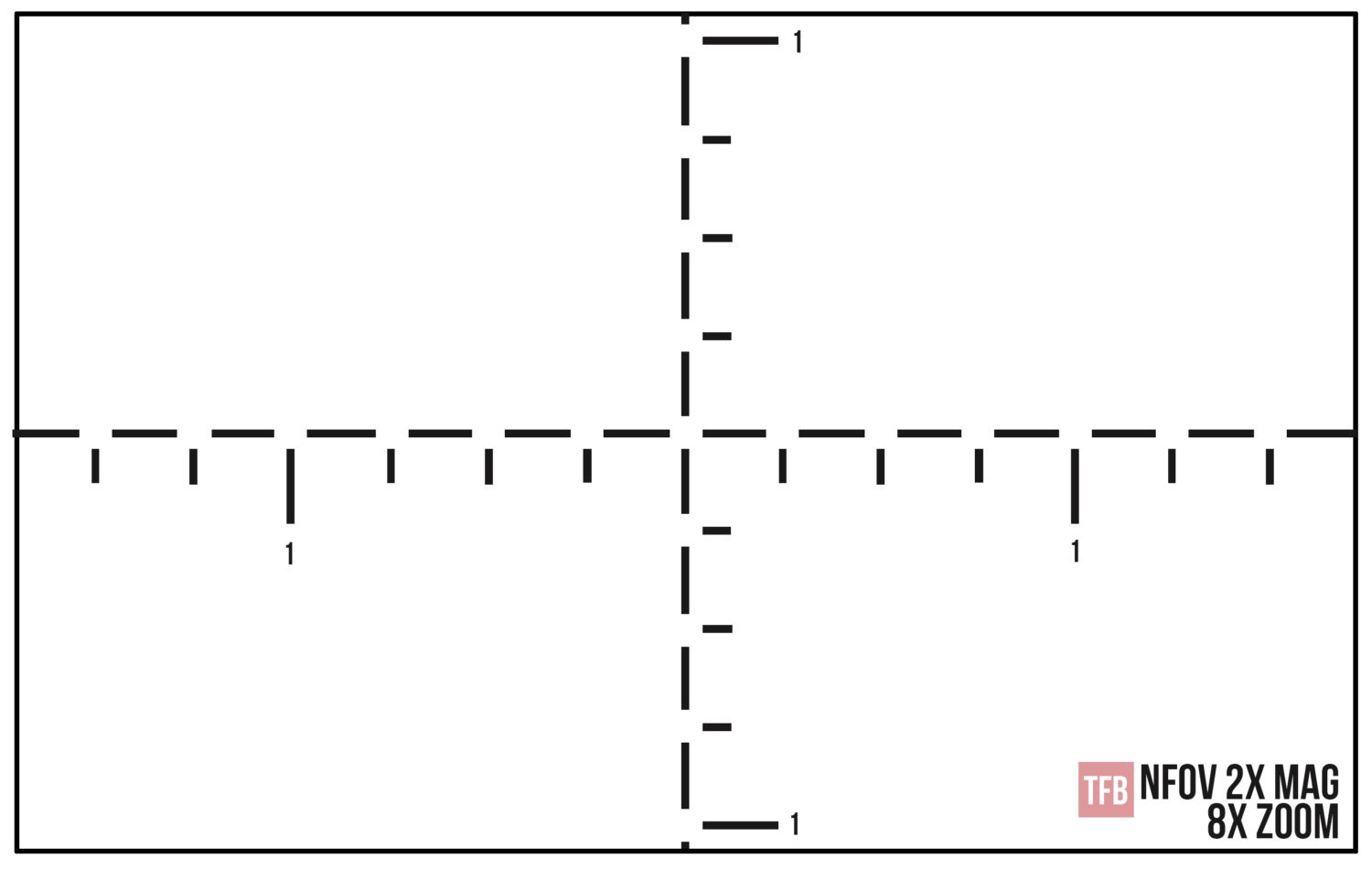
I tried the at-home inkjet transparencies to print these out but they did not last when they got wet. So I had these printed at my local Office Depot. Below are photos I took with my iPhone of my tablet displaying the image produced by the LRTV with one of my reticle overlays on top of the screen. This was before I put text in the corner designating what zoom level this reticle was for.
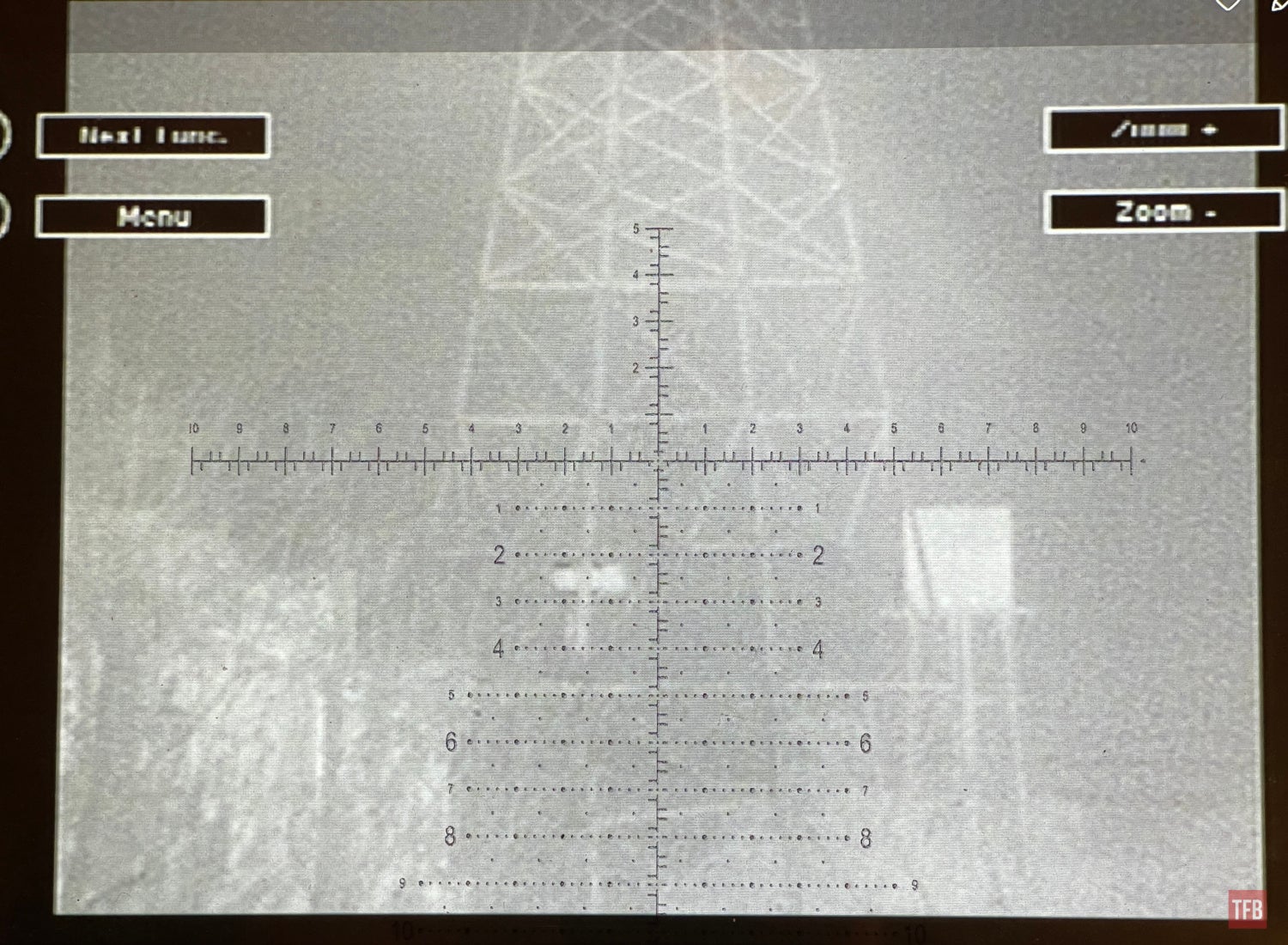
Here is the overlay for the max magnification. 8x digital zoom with the 2x afocal magnifier. The image is not great but in case I need it, I have the reticle to spot misses.

I cut the top right corners of the overlays but each one is less cut than the one behind it. That way I can easily flip through them and I punched a hole through the bottom left corner and tied them to a zipper pull. I learned the hard way to keep them tethered. Single sheets can get caught in the wind and if the wind is strong enough all of them can scatter. But if they are tied together it is harder for them to get carried away by the wind.
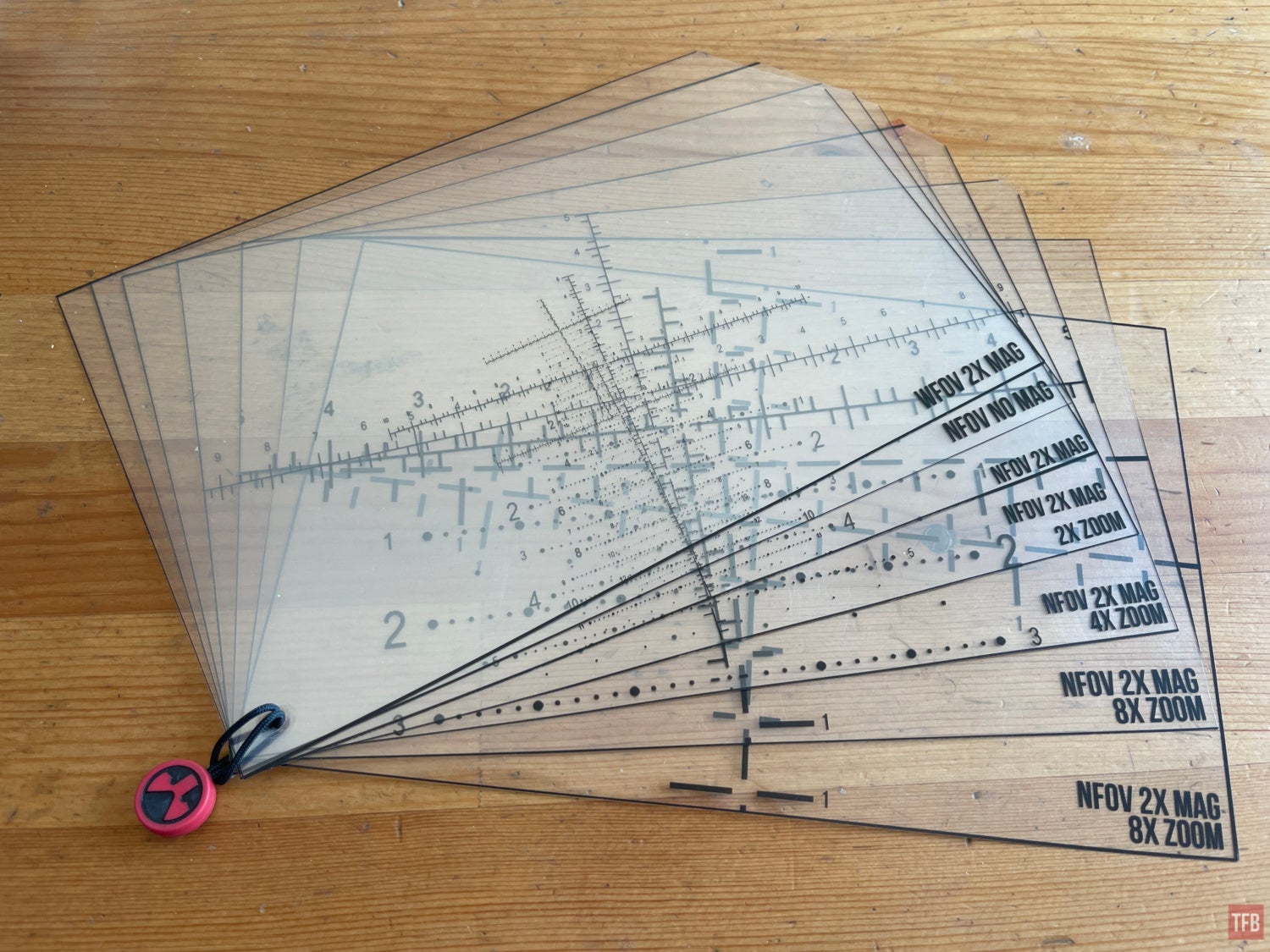
Interestingly, I can still manipulate my Android tablet with the transparency sheet covering the screen.
Shooting The Dark ELR
The biggest challenge was actually getting on target at night. Since we did not heat up the steel target like last time, it was hard to see it with the LRTV. The other problem is the LRTV is thermal and cannot see light so I could not see where Kevin was aiming his laser designator. While the LRTV has a day camera it is not sensitive to low light so I still would not be able to aim that way. I did not think about it at the time but I should have used the onboard IR laser on the LRTV and point to what I thought was the target and have Kevin confirm or correct my position since he is using night vision to aim. Normally it is the other way around. I would designate a thermal target with the LRTV onboard IR laser and the shooter would get on target based on my laser.
I thought the white thing circled in blue was the target and Kevin took his first shot. It landed where I circled in red. The target is actually in-between the two circles.
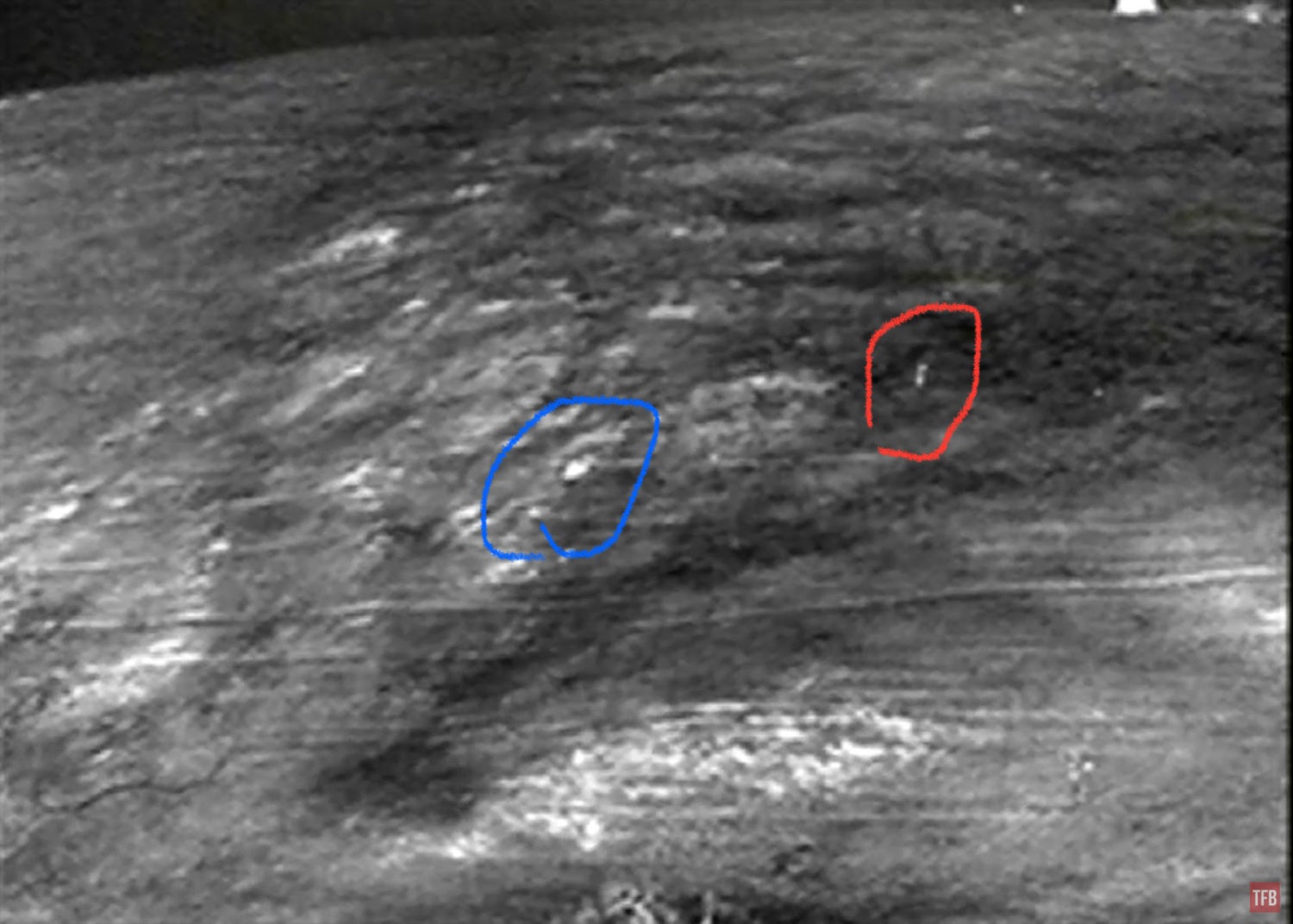
So if you look at this screencap, the target is what was circled in yellow.
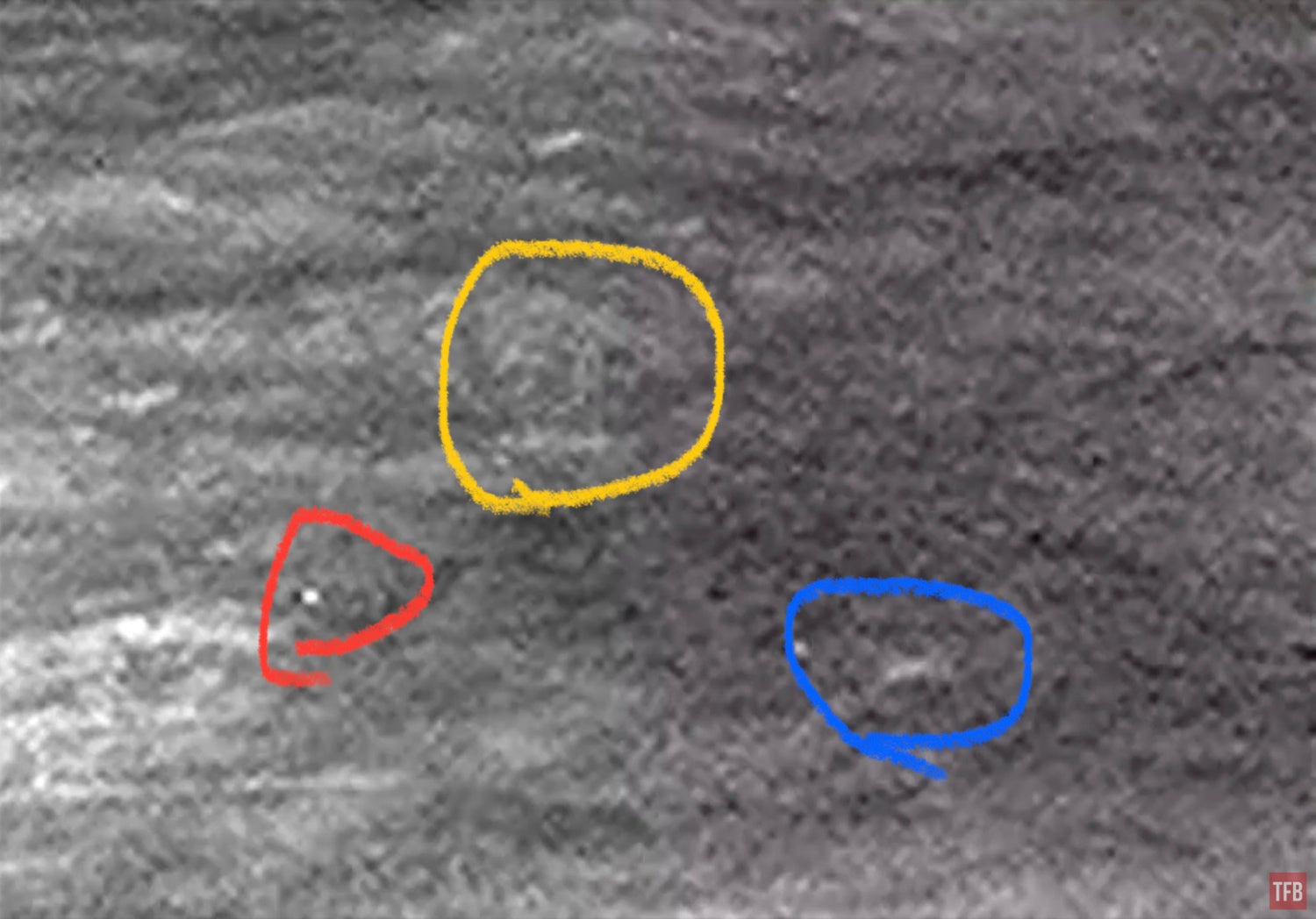
Final Thoughts On Dark ELR
My friends and I have reached a plateau. There are no targets that are past 2,200 yards at the range we shoot at. There is talk about hanging a 3k-yard piece of steel for the true ELR shooters shooting Cheytac rifles and calibers. But I feel an extra 800 yards is not really a challenge anymore. I know the people who have those Cheytac rifles can do it and maybe the LRTV can see that far.
Right now my friends and I are thinking of going smaller and more difficult. ELR with rim fire. The Garand Thumb challenge of hitting a soda can 700 yards away is what piqued our interest. We want to try and get the result, hit a soda can 700 yards away with .22LR. Now we won’t be trying with iron sights and an off-the-shelf 10/22. My friends have Vudoo actions and RIMX actions, precision lathed copper projectiles to load their own .22LR loads, as well as top-of-the-line optics. We are still in the planning stages and we plan to borrow a Charlie Tarac to help us get the elevation shift to aim at this distance. I am curious to see how a Charlie Tarac works with night vision and thermal clip-on. Of course, I will be using the LRTV to help spot what will most likely be an indirect fire of .22LR bullets falling out of the sky trying to hit a soda can 700 yards away. Wish us luck.
Read the full article here



